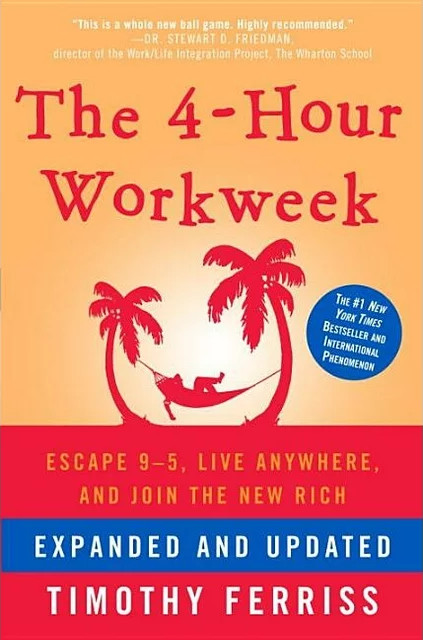Financial independence, a term often associated with freedom and security, is a goal many aspire to achieve. In this guide, we will explore the essential steps towards building financial independence through smart saving and investing.
Financial Independence Through Smart Saving and Investing
Smart Saving Strategies
Budgeting Basics
One of the foundational steps towards financial independence is mastering the art of budgeting. Creating a realistic budget helps in understanding where your money goes and enables you to allocate funds efficiently.
Emergency Fund Essentials
An emergency fund acts as a financial safety net during unexpected situations. Learn the importance of setting aside a portion of your income for emergencies, ensuring you are prepared for any financial curveball life may throw at you.
Automating Savings
In a world filled with distractions, automating your savings is a game-changer. Set up automatic transfers to your savings account, making it easier to stick to your financial goals without constant manual intervention.
Cutting Unnecessary Expenses
Identify and eliminate unnecessary expenses to boost your savings. Small changes in lifestyle can result in significant savings over time. Analyze your spending habits and make conscious choices to cut down on non-essential costs.
Investing Wisely
Understanding Investment Options
Dive into the world of investment by understanding various options like stocks, bonds, and mutual funds. Each comes with its own set of risks and rewards, and a well-informed choice is crucial for long-term success.
Risk and Diversification
Learn the art of balancing risk and diversification in your investment portfolio. A diversified portfolio helps mitigate risks, ensuring that the performance of one investment does not overly impact your overall financial health.
Risk is an inherent part of the financial landscape, and recognizing and managing it is key to achieving long-term financial independence. Investments inherently involve some level of risk, but the key is to strike a balance between risk and reward that aligns with individual financial goals and risk tolerance.
One commonly cited principle is the risk-return tradeoff. Higher potential returns often come with higher levels of risk. While riskier investments can yield substantial profits, they also carry the potential for significant losses. It’s essential for individuals to carefully assess their risk tolerance, which is the ability and willingness to withstand fluctuations in the value of investments.
Diversification is a strategy that can help mitigate risk in an investment portfolio. Instead of putting all your financial eggs in one basket, diversification involves spreading investments across different asset classes, industries, and geographical regions. The goal is to create a well-balanced portfolio that can weather market volatility and reduce the impact of poor-performing investments on the overall portfolio.
By diversifying, investors can potentially benefit from the performance of different sectors and asset classes, lowering the overall risk associated with their investments. For instance, a portfolio that includes a mix of stocks, bonds, real estate, and other assets may be better positioned to withstand market downturns than a portfolio heavily concentrated in a single asset class.
Setting Investment Goals
Define clear investment goals based on your financial objectives and risk tolerance.

Define Your Financial Independence Goals
The first step in setting investment goals for financial independence is to define what financial independence means to you. This could include retiring comfortably, purchasing a home, funding a child’s education, or traveling the world. Clearly outlining your objectives provides a tangible target for your investment strategy.
Quantify Your Goals
Once you’ve identified your financial independence goals, quantify them. Assign specific monetary values and timeframes to each goal. This precision not only helps you gauge the feasibility of your goals but also allows you to break down larger objectives into smaller, more manageable milestones.
Establish a Realistic Time Horizon
Recognize that achieving financial independence is a long-term endeavor. Set a realistic time horizon for each of your investment goals. Different objectives may have varying timeframes, and your investment strategy should reflect these timelines. Understanding the power of compounding over time can be a motivating factor in staying committed to your financial plan.
Regularly Review and Adjust
Financial markets are dynamic, and personal circumstances change. Regularly review your investment portfolio and reassess your goals. Adjust your strategy as needed to accommodate changes in your risk tolerance, financial situation, or market conditions. Flexibility and adaptability are key to staying on course toward financial independence.
Long-Term Vision
Retirement Planning
A key aspect of financial independence is planning for retirement. Explore strategies for building a robust retirement fund and understand the importance of starting early to maximize the power of compounding.
Tax-Efficient Investing
Optimize your investments by understanding tax implications. Efficient tax planning can significantly impact your overall returns, allowing you to keep more of your hard-earned money.
Reinvesting Profits
Explore the benefits of reinvesting your investment profits. Reinvesting helps compound returns, accelerating the growth of your portfolio over time.
Staying Informed
Continuous Learning
The financial landscape is ever-evolving. Stay ahead by committing to continuous learning. Whether through books, online courses, or workshops, expanding your financial knowledge is a lifelong journey.
Monitoring Financial News
Keep a close eye on financial news to stay informed about market trends and economic developments. Being aware of the broader economic landscape helps in making informed investment decisions.
Seeking Professional Advice
Consider seeking advice from financial professionals. A certified financial advisor can provide personalized guidance based on your unique financial situation, helping you navigate complex investment decisions.
Pitfalls to Avoid
Impulse Spending
Avoid falling into the trap of impulse spending. Recognize and curb impulsive financial decisions that can hinder your progress towards financial independence.
Overlooking Risks
While investing is essential, overlooking associated risks can be detrimental. Assess the risks involved in each investment and make informed decisions rather than succumbing to the allure of high returns.
Neglecting Emergency Fund
A well-maintained emergency fund is your financial safety net. Neglecting it may leave you vulnerable to unforeseen circumstances, potentially derailing your progress towards financial independence.
Navigating Economic Challenges
Strategies for Economic Downturns
Prepare for economic downturns by implementing strategies to safeguard your investments. Diversify your portfolio, reassess your risk tolerance, and have a plan in place to weather financial storms.
Adapting to Market Volatility
Markets can be volatile. Learn to navigate market fluctuations by adopting a long-term perspective. Emotional decision-making often leads to losses, while patience can result in significant gains.
Long-Term Perspective
Cultivate a long-term perspective towards your financial journey. Understand that financial independence is a marathon, not a sprint. Consistent efforts over time yield better results than short-term, erratic strategies.
Balancing Risk and Reward
Finding the Right Risk Tolerance
Everyone has a different risk tolerance. Find the right balance that aligns with your financial goals and comfort level. A well-calibrated risk-reward ratio is key to sustainable financial growth.
Adjusting Strategies with Age
As you age, your financial goals and risk tolerance may change. Adjust your investment strategies accordingly to ensure they align with your current life stage and future aspirations.
Staying Consistent
Consistency is crucial in the realm of finance. Stick to your budget, savings plan, and investment strategy. Consistent efforts compound over time, leading to substantial financial growth.
Achieving Financial Freedom
Defining Financial Freedom
Financial freedom is more than just accumulating wealth; it’s about having the flexibility to live life on your terms. Define what financial freedom means to you and tailor your strategies accordingly.
Celebrating Milestones
Acknowledge and celebrate financial milestones along the way. Whether it’s reaching a savings target or achieving a significant investment return, recognizing your achievements reinforces positive financial habits.
Adapting Goals as Necessary
Life is dynamic, and so should be your financial goals. Be open to reassessing and adapting your goals as necessary, ensuring they remain relevant and achievable.
Resources for Further Learning
Recommended Books
Discover a curated list of books that delve into the intricacies of financial management and investment strategies. Books offer in-depth knowledge and valuable perspectives from seasoned financial experts.
Online Courses
Enroll in online courses that cover various aspects of finance and investment. Educational platforms provide convenient access to valuable insights, empowering you to enhance your financial literacy.
Financial Planning Tools
Explore tools that simplify financial planning. From budgeting apps to investment calculators, leverage technology to streamline your financial management and decision-making process.
Common Misconceptions
Breaking Down Myths about Financial Independence
Address common misconceptions about financial independence. By debunking myths, gain a clearer understanding of the realistic expectations and steps needed to achieve financial freedom.
Clarifying Misunderstood Concepts
Financial concepts can be complex. Clarify commonly misunderstood concepts, ensuring that you have a solid understanding of the principles guiding your financial decisions.
Engaging with a Financial Community
Benefits of Joining Financial Forums
Connect with like-minded individuals by joining financial forums. Share experiences, seek advice, and gain insights from a supportive community that can enrich your financial journey.
Networking for Success
Networking is a powerful tool in the financial world. Build connections with professionals and fellow enthusiasts to stay updated, exchange ideas, and potentially discover new investment opportunities.
Supportive Communities
Surround yourself with a supportive community that understands the challenges and triumphs of the financial independence journey. Share your experiences, seek guidance, and celebrate milestones together.
Conclusion
In conclusion, building financial independence is a multifaceted journey that requires a combination of smart saving and strategic investing. By understanding the principles outlined in this guide, you’re equipped to take control of your financial future and work towards achieving the freedom and security that financial independence brings.
FAQs
- How much should I save for an emergency fund?
- The general recommendation is to save three to six months’ worth of living expenses.
- Is it too late to start investing if I’m already in my 40s?
- It’s never too late to start investing. Adjust your strategy based on your goals and risk tolerance.
- What is the best investment option for beginners?
- Index funds and mutual funds are often recommended for beginners due to their diversification.
- How frequently should I reassess my investment portfolio?
- It’s advisable to reassess your portfolio at least annually or when there are significant life changes.
- How do I determine my risk tolerance?
- Consider your financial goals, time horizon, and comfort level with market fluctuations when assessing your risk tolerance.


